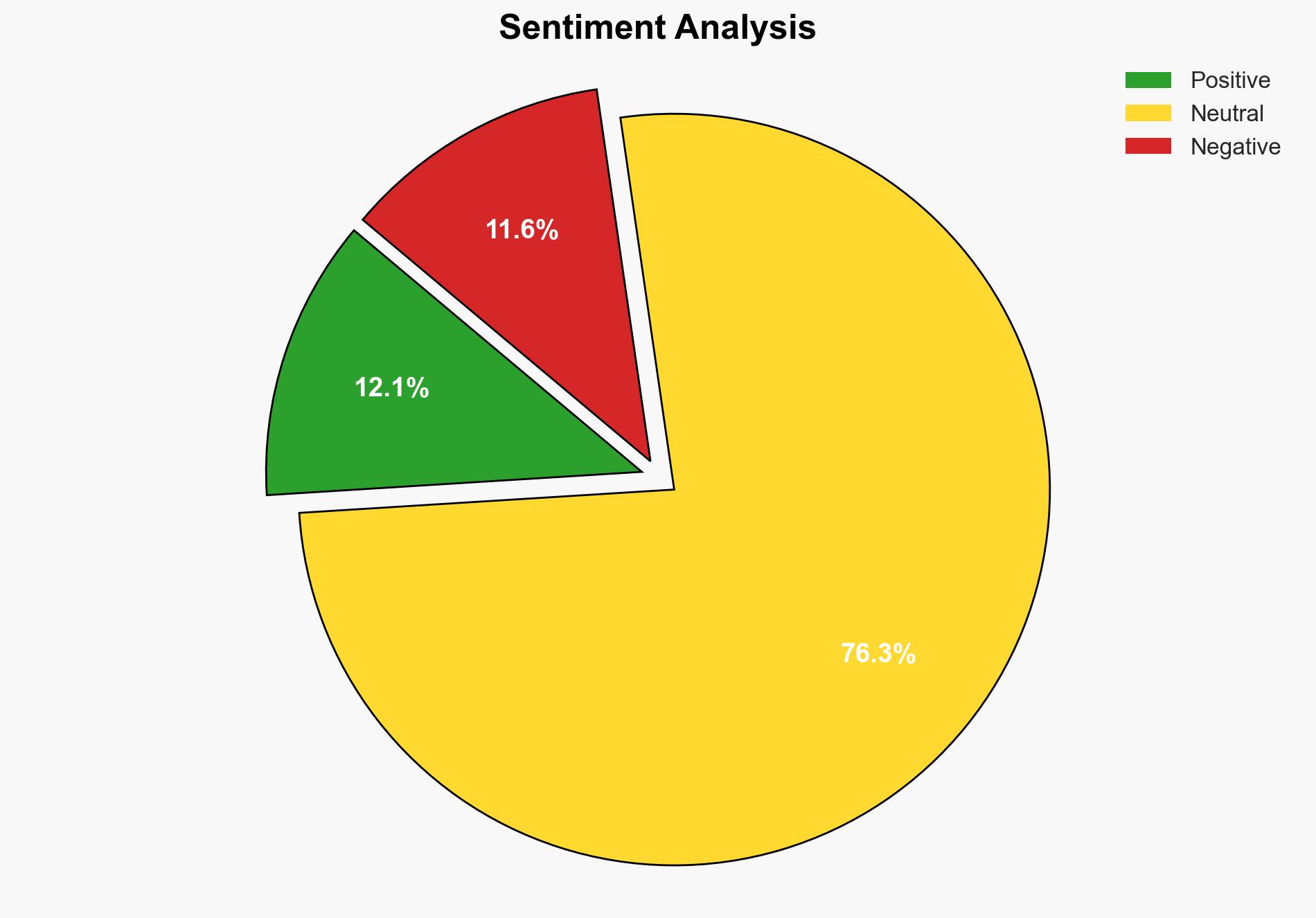Fortinet FortiWeb Flaw Actively Exploited in the Wild Before Company’s Silent Patch – Internet
Published on: 2025-11-14
AI-powered OSINT brief from verified open sources. Automated NLP signal extraction with human verification. See our Methodology and Why WorldWideWatchers.
Intelligence Report: Fortinet FortiWeb Flaw Actively Exploited in the Wild Before Company’s Silent Patch – Internet
1. BLUF (Bottom Line Up Front)
The Fortinet FortiWeb authentication bypass vulnerability has been actively exploited in the wild before the company issued a silent patch. The most supported hypothesis is that the exploitation is opportunistic, targeting unpatched systems for unauthorized access. Immediate patching and enhanced monitoring are recommended to mitigate risks. Confidence Level: Moderate.
2. Competing Hypotheses
Hypothesis 1: The exploitation of the Fortinet FortiWeb vulnerability is primarily opportunistic, driven by cybercriminals seeking to exploit unpatched systems for unauthorized access and potential data exfiltration.
Hypothesis 2: The exploitation is part of a coordinated campaign by a sophisticated threat actor aiming to establish persistent access in targeted networks for strategic purposes.
Hypothesis 1 is more likely given the indiscriminate nature of the exploitation observed, suggesting a broad, non-targeted approach typical of opportunistic cybercriminal activity.
3. Key Assumptions and Red Flags
Assumptions: It is assumed that the vulnerability was unknown to Fortinet until exploitation was detected, and that the silent patch indicates an attempt to mitigate without alerting threat actors.
Red Flags: The silent patching approach could indicate either an attempt to downplay the severity or a lack of readiness to publicly address the vulnerability. The rapid exploitation suggests potential prior knowledge by threat actors.
4. Implications and Strategic Risks
The exploitation of this vulnerability poses significant risks to organizations using Fortinet FortiWeb, including unauthorized access, data breaches, and potential lateral movement within networks. If left unaddressed, this could lead to reputational damage, financial loss, and increased vulnerability to further attacks. The incident highlights the need for improved vulnerability disclosure and patch management practices.
5. Recommendations and Outlook
- Actionable Steps: Organizations should immediately apply the patch provided by Fortinet, enhance monitoring for signs of compromise, and review access logs for unauthorized activity.
- Best Scenario: Rapid patch deployment and increased vigilance prevent further exploitation, minimizing impact.
- Worst Scenario: Continued exploitation leads to widespread data breaches and significant operational disruptions.
- Most-likely Scenario: Affected organizations experience minor disruptions, but effective patching and monitoring mitigate major impacts.
6. Key Individuals and Entities
Benjamin Harris (WatchTowr CEO and Founder), Sina Kheirkhah (WatchTowr Labs Researcher), Daniel Card (Defused Security Researcher).
7. Thematic Tags
Structured Analytic Techniques Applied
- Adversarial Threat Simulation: Model and simulate actions of cyber adversaries to anticipate vulnerabilities and improve resilience.
- Indicators Development: Detect and monitor behavioral or technical anomalies across systems for early threat detection.
- Bayesian Scenario Modeling: Quantify uncertainty and predict cyberattack pathways using probabilistic inference.
- Network Influence Mapping: Map influence relationships to assess actor impact.
Explore more:
Cybersecurity Briefs ·
Daily Summary ·
Support us
·





